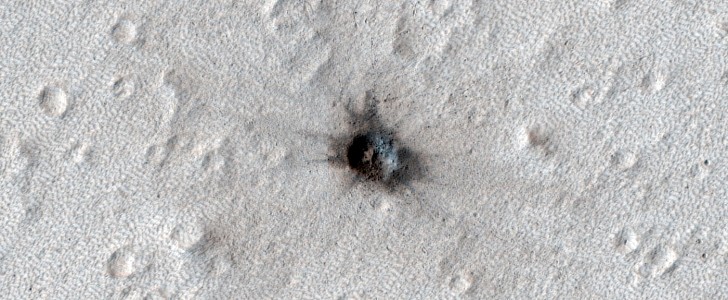Humanity is well on its way to discovering the secrets our sister planet keeps hidden. No, we’re not talking about the usual sister, Venus, but the other one, Mars, the target of so many projects that have been and are being created here on the blue world.
There are presently a number of human-made technologies on the surface of the planet, and a number of others are orbiting Mars, giving us a very comprehensive look at the place. One of the spaceborne systems currently in use is the High-Resolution Imaging Science Experiment (HiRISE) camera, a gadget placed inside Mars Reconnaissance Orbiter.
The thing’s main task is to “study active surface processes and landscape evolution,” which is a fancier way of saying it stares at the planet looking for cool stuff to send back to Earth.
We’ve seen a number of these discoveries over the past few months, including the Shai-Hulud-like dunes in Melas Chasma, or the swiss cheese terrain at the Martian south pole. Now it’s time for something a bit more… violent.
The cigarette burn-like dot you’re looking at in the main photo of this piece is an impact crater. The image was taken in March 2020 and published this month by the people running the HiRISE show, meaning NASA, JPL, and the University of Arizona.
According to the data provided by the trio, the crater is likely to have been formed after an impact that took place in 2008. It was first spotted in 2014, and was now photographed once more by the orbiter’s camera to see if there are any changes to the crater because, well, that’s what the camera was sent there to do.
For now, it is impossible to say how many times Mars gets hit by pieces of space rocks. A recent study by the same people running HiRISE hints at the Red Planet getting hit about 200 times per year, with the asteroids and such being generally no larger than 6 feet in diameter (1.8 meters).
The thing’s main task is to “study active surface processes and landscape evolution,” which is a fancier way of saying it stares at the planet looking for cool stuff to send back to Earth.
We’ve seen a number of these discoveries over the past few months, including the Shai-Hulud-like dunes in Melas Chasma, or the swiss cheese terrain at the Martian south pole. Now it’s time for something a bit more… violent.
The cigarette burn-like dot you’re looking at in the main photo of this piece is an impact crater. The image was taken in March 2020 and published this month by the people running the HiRISE show, meaning NASA, JPL, and the University of Arizona.
According to the data provided by the trio, the crater is likely to have been formed after an impact that took place in 2008. It was first spotted in 2014, and was now photographed once more by the orbiter’s camera to see if there are any changes to the crater because, well, that’s what the camera was sent there to do.
For now, it is impossible to say how many times Mars gets hit by pieces of space rocks. A recent study by the same people running HiRISE hints at the Red Planet getting hit about 200 times per year, with the asteroids and such being generally no larger than 6 feet in diameter (1.8 meters).











